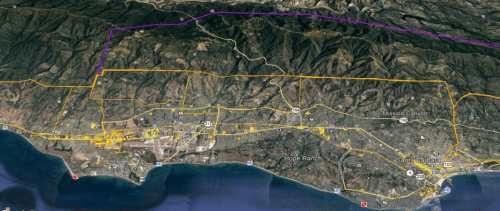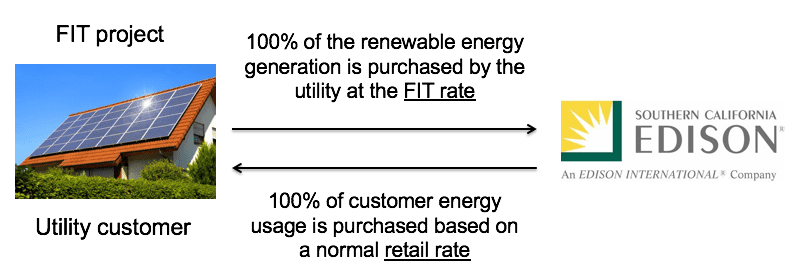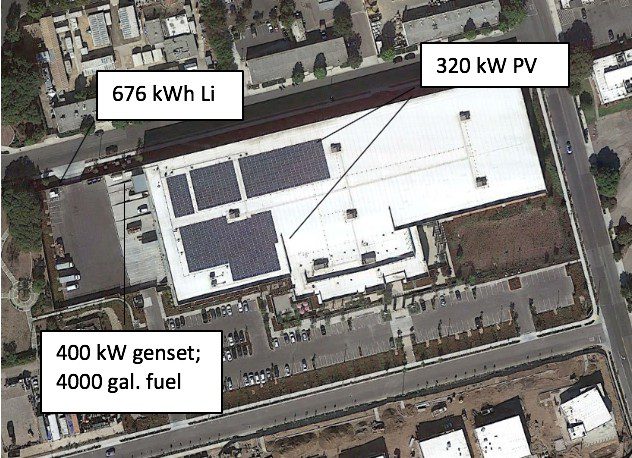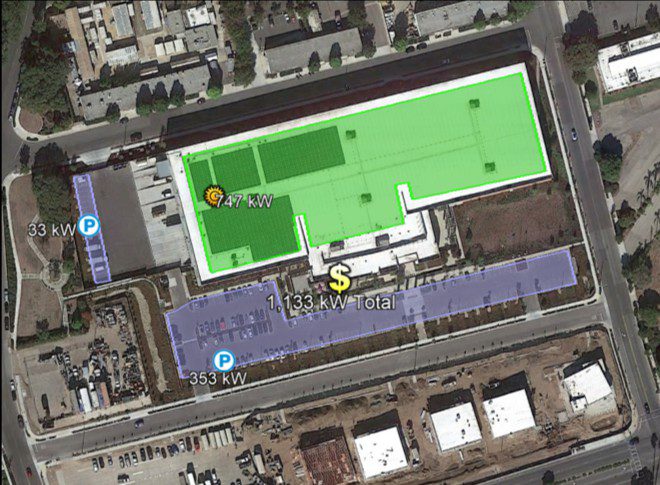
The most effective way to deploy a Community Microgrid in the Goleta Load Pocket
A Feed-In Tariff targeted at critical community facilities will bring resilience to this California region.
In our last blog post, “Why we need a Community Microgrid in the Goleta Load Pocket,” we showed how a renewables-driven Community Microgrid can deliver an unparalleled trifecta of economic, environmental, and resilience benefits to the transmission-vulnerable, disaster-prone Santa Barbara region. Currently, the Goleta Load Pocket Community Microgrid (GLPCM) is being staged to provide 100% renewables-driven resilience in any case of the highly vulnerable transmission grid that serves the GLP going out – whether due to fire, landslide, earthquake, terrorist attack, or the Public Safety Power Shutoffs (PSPS) anticipated by Southern California Edison (SCE).

But what’s the best way to deploy the solar+storage needed to protect the GLP against a complete transmission outage?
Resilience Feed-In Tariff (FIT)
Feed-In Tariffs have proven their effectiveness for procuring commercial-scale renewable energy. A FIT is a standardized, long-term, guaranteed contract that allows smaller local renewable energy projects to sell power to the local utility or other load-serving entity (LSE). The renewable energy generated under the FIT is sold to the LSE at the FIT rate, and the LSE then sells it at the common retail price.
The Clean Coalition’s FIT design for the City of San Diego, which was part of a recent filing to the California Public Utilities Commission (CPUC), is a good example of a state-of-the-art FIT with Market Responsive Pricing – this allows prices to adjust based on market response, ensuring that energy contracts are always set at the best price. A FIT can also be tailored to drive the deployment of projects with certain characteristics, such as location, size, or ability to dispatch power on-call using energy storage.

In particular, a Resilience FIT facilitates commercial-scale renewable energy and storage projects targeted at critical community facilities. This mechanism simplifies the process for commercial properties to participate in energy generation while also providing communities environmental, economic, and resilience benefits.
FITs vs auctions and net energy metering
The current system of auctions is not effective for accelerating renewable energy development in the GLP. Competitive solicitations like auctions are not efficient due to exorbitant bidding costs and extreme failure rates. The average minimum cost of producing an auction bid is over $150,000. This high cost overwhelms commercial-scale renewable energy projects that have turnkey costs under $500,000. Competitive bidding also adds high administrative costs with high risks that delay the development of wholesale renewable energy projects. The result of the many issues with the auction system is that auction bids in California have an astonishing failure rate of 97%.

A solution to these issues is a FIT with standardized contracts, prices, and adders that can be approved in a single decision. Not only does a FIT nearly eliminate speculative projects, but it also drives down development costs.
We have evidence that FITs are effective. Cities and states across the US are using FITs to deliver cost-effective renewable energy. And during the decade of Germany’s national FIT, Germany deployed 10 times more solar capacity than California:

Direct Relief case study
An example of how a Resilience FIT will help create more clean local energy projects in the GLP is the Direct Relief Microgrid. Direct Relief, one of the largest disaster recovery and supply nonprofits in the world, needed a microgrid to ensure that their Goleta headquarters never loses electricity. Net energy metering (NEM) and other behind-the-meter constraints limited Direct Relief to 320 kilowatts of solar, even though its built environments can support almost four times that amount of solar. While NEM works well for residential solar installations, this example illustrates that it is not an effective mechanism for most commercial-scale sites, whose electric load is often smaller than their generating capacity.

A Solar Siting Survey produced by the Clean Coalition shows that the Direct Relief site has 1,133 kilowatts (kW) of total solar siting potential. This breaks down to 320 kW of existing solar, 427 kW of additional rooftop solar, and 386 kW of solar on the site’s parking lot.

A Resilience FIT would allow Direct Relief to make better use of this space by deploying more solar+storage, so the facility could keep more of its load online for longer during an outage, while also adding to the overall needed local energy generation that would provide resilience to the entire GLP.
Similarly, the GLP has ample solar+storage siting opportunity – enough for the 200 megawatts (MW) of local solar and 400 megawatt-hours (MWh) of local energy storage it needs for indefinite backup power in a 100% outage. The initial building blocks of the GLPCM will begin with indefinite renewables-driven backup power for critical community facilities like fire stations, emergency recovery and sheltering, and vital water and communications facilities. Taking advantage of this opportunity to provide resilience to the region will require using a mechanism that works: a Resilience FIT.
Overcoming power outage risks
Public Safety Power Shutoffs (PSPS), Southern California Edison’s last-resort public safety measure to mitigate wildfire risk, may become more common as the summer begins, leaving more critical community facilities without power within the GLP. The on-site diesel generators these facilities rely on now are noisy and dirty – and they generally have only enough fuel on hand to power a site for two days.
To provide 100% renewables-driven backup power to the entire GLP, we need to start with critical community facilities by introducing a Resilience FIT. This will bring us one step closer to a Community Microgrid that will provide real energy resilience to the disaster-prone GLP region.

